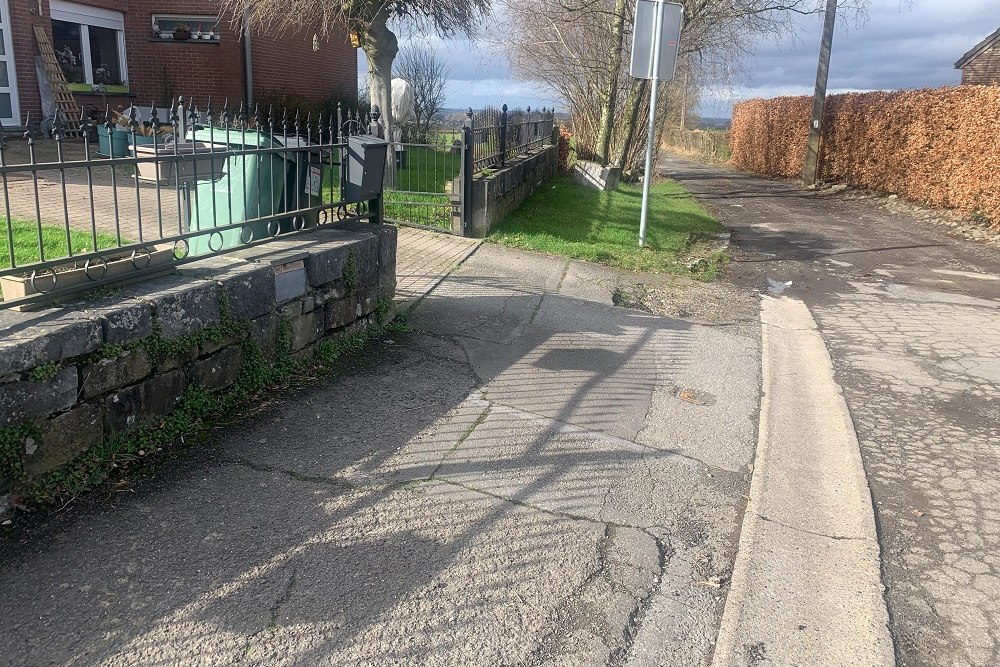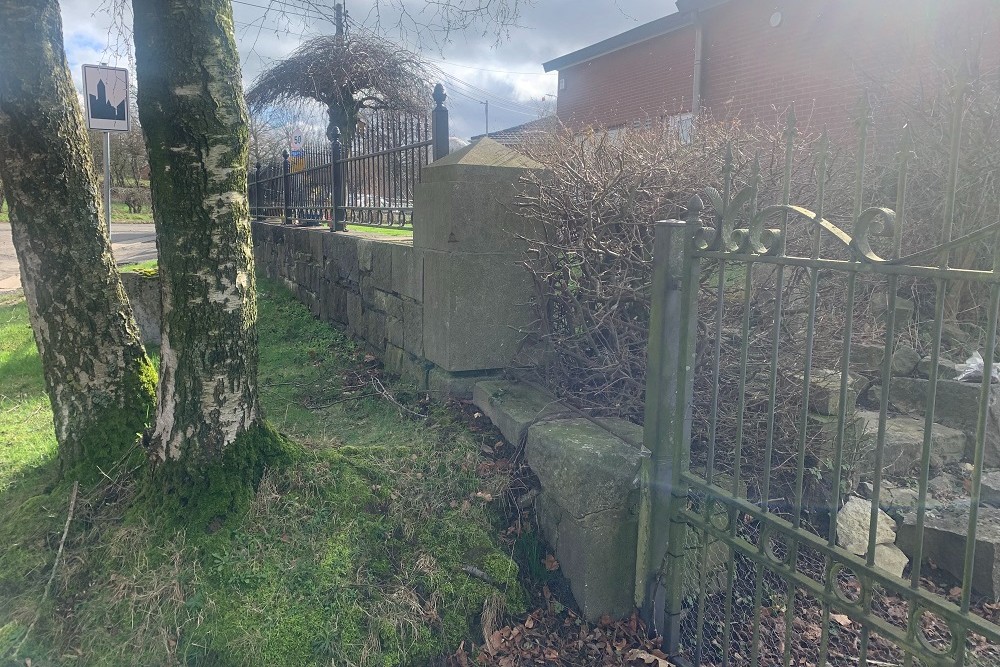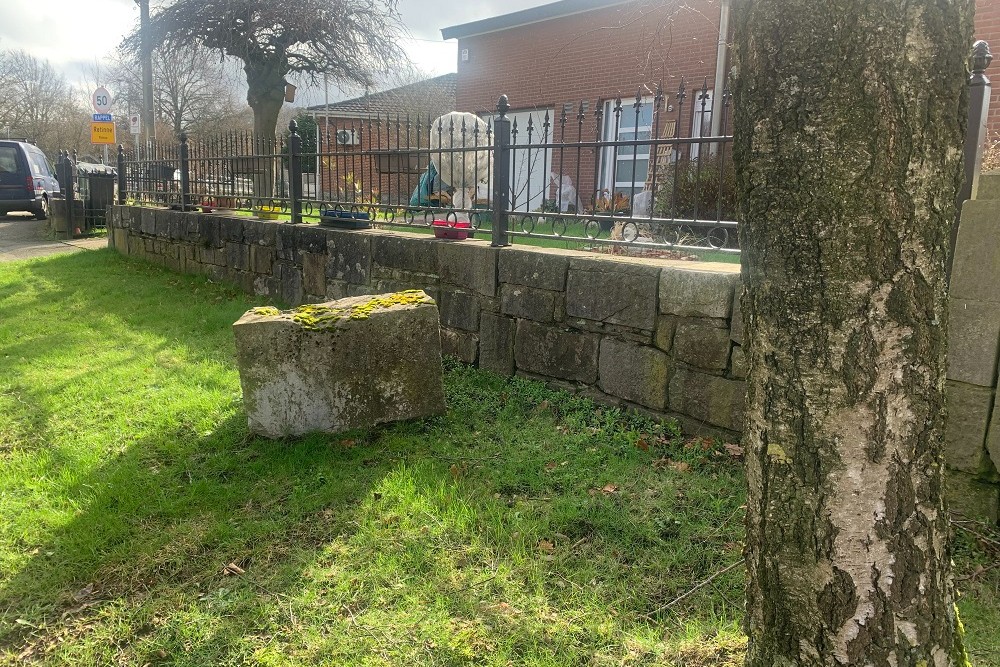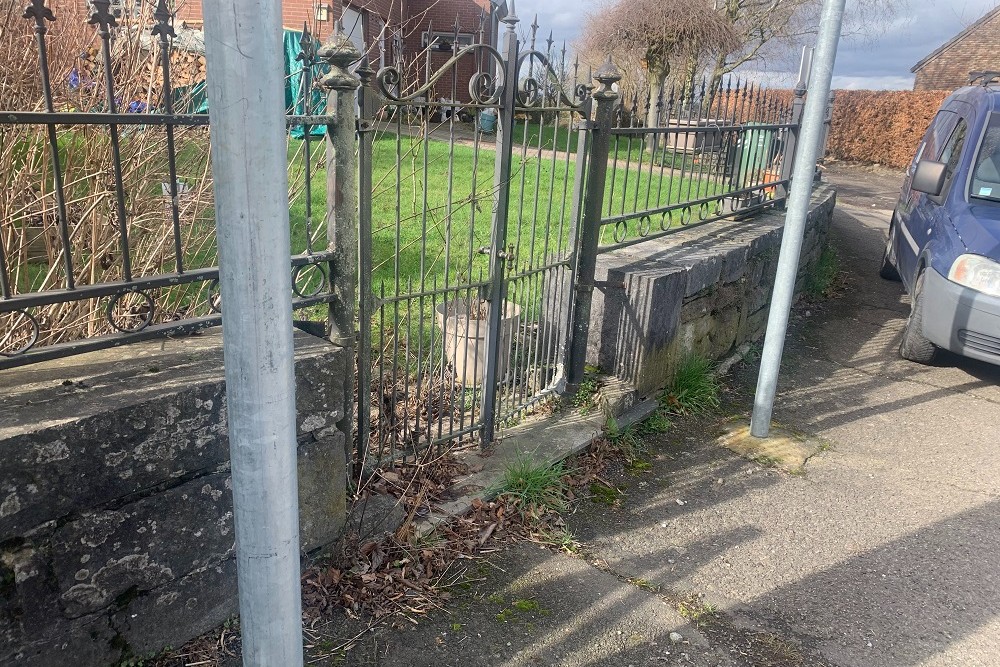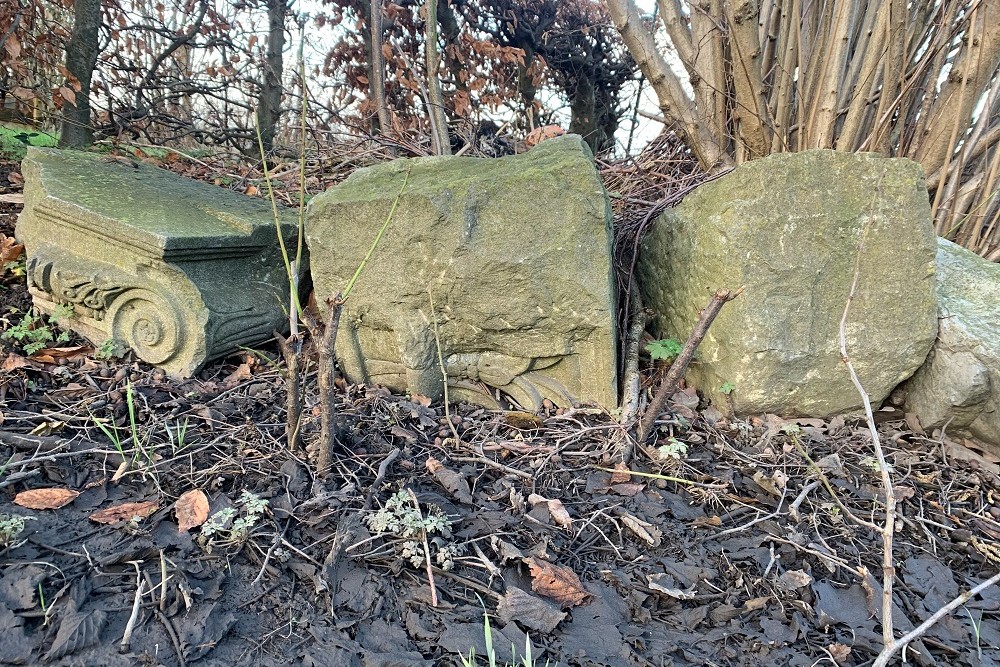Former German Cemetery Retinne
At this site, the Belgian army had built a defensive structure, which became known as the "redoubt 25". After the German army invaded Belgium on Aug. 4th, 1914, heavy fighting took place at this site on Aug. 5 and 6, 1914.
Soldiers of the Belgian 12th and 14th Line Regiments inflicted heavy losses on the German 14th Brigade (27th Infantry Regiment, 165th Infantry Regiment, 4th Battalion Hunters, 1st Company of the 10th Hussars Regiment, 11th Battery of the 4th Field Artillery Regiment and the 4th Company of the 24th Pioneer Regiment). Finally, the outnumbered Belgians had to give in to the supremacy of the German army and retreat. In the same time the German assault troops were under heavy fire from Fort Fléron.
Both the Belgian and German sides suffered heavy losses. And after the German army took this place on August 5 and 6, 1914, it was later set up as a German cemetery.
24 Belgian soldiers were buried in the cemetery near the church of Sainte Julienne at Retinne after the battle. However in 2009, they were exhumed and 7 of them were reburied in the Rabosée Military Cemetery 1914-1918. (Red. Reference to this cemetery and monument will follow).
Only the wall of this cemetery has survived. A house was later built on the plot. The wall forms the property boundary.
Also buried in this former cemetery was the first German general killed during the First World War, Major General Von Wussow. A monument to him had been erected on the loaction where he fell.
At the request of the Belgian government, the small German cemeteries were closed in the 1950's, and the 146 soldiers buried here were moved to the larger cemeteries, in this case the cemetery of Vladslo (over 225 km away) in West Flanders. This general was also later reburied at Vladslo, and the monument demolished.
Apart from the wall, nothing reminds one of the "redoubt" or the German cemetery. Only the wall remains and two loose carved stones by which one recognizes that they had a function in the cemetery. These 2 loose stones, photo 5, were part of the monument in the cemetery. They were 2 stones from the top of the obelisk-shaped monument, bearing the German cross. Also, one of the two corner blocks, photo 3 (identified by the attachment point of the entrance gate) from the main entrance still lies in the grass in front of the wall.
The wall itself when it was a cemetery was one or two rows of stones higher. Old photos of the cemetery show that the right corner fence, photo 2, is more closely aligned with toplayer. Shown on preserved old photographs of the monument in the cemetery, and the separate monument to Major General Von Wussow, which stood further down (south) the street, which is now known as Rue du 6 Août.
The field behind and to the right of the house is now a grassland. In the grassland, nothing more reminds one that there was a cemetery here. Nor are any traces of the "redoubt" left. On the opposite side of the road, lie a number of bluestone blocks that, given their size, shape and color, were probably incorporated into the cemetery monument. (This, however, needs further investigation.)
Do you have more information about this location? Inform us!
Source
- Text: Ed Lewandowski
- Photos: Ed Lewandowski
- 'Luik, augustus 1914'. zoektocht naar een vergeten slag, 2009.
Nearby
Museum
- Museum Maison du Souvenir - Hermalle-sous-Argenteau
- Museum of the Fort Aubin-Neufchâteau - Neufchâteau (Dalhem)
- Fort de Tancrémont-Pepinster - Pepinster
Point of interest
- Bunker MeMo 1 and 1 bis - Ile Monsin, Liège
- Memorials Saint Elisabeth Church - Bruyères (Herve)
- Memorial TROUSSON Felix - Chaudfontaine
Monument
- War Memorial Retinne - Retinne (Fléron)
- War Memorial Two Resistance Members - Evegnée
- War Memorial Fort d'Evegnée - Evegnée-Tignée (Soumagne)
Cemetery
- Belgian War Graves Retinne - Retinne
- Belgian Wargraves Tignée-Evegnée - Tignée-Evegnée
- Belgian War Grave Tignée - Tignée
